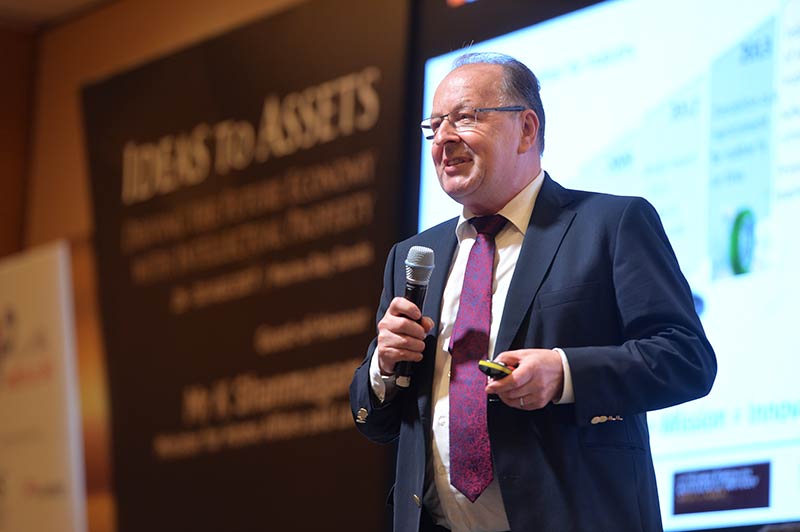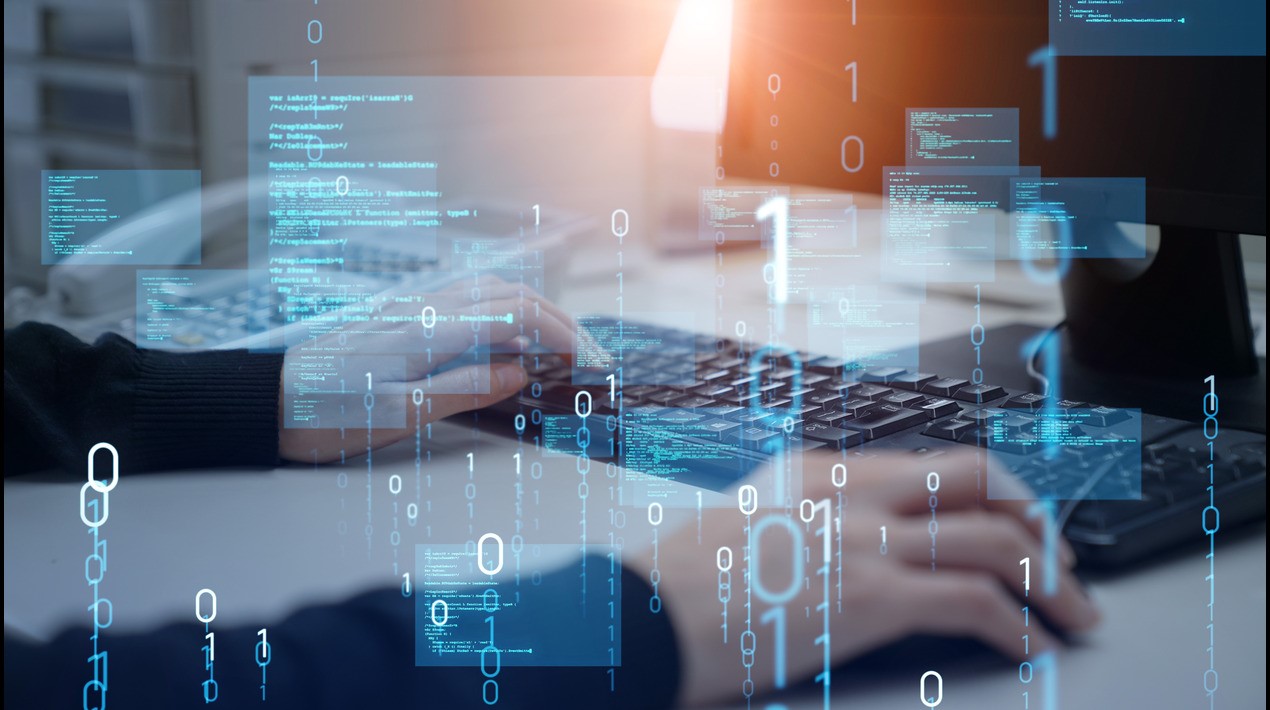
Photo credit: IPOS
Fraunhofer-Gesellschaft (Fraunhofer) is Europe’s largest application-oriented research organisation with 69 institutes located throughout Germany, each focusing on different fields of applied science. At the sidelines of IP Week@SG 2017 organised by the Intellectual Property Office of Singapore (IPOS), OpenGov had the opportunity to speak to Dr. Lorenz Kaiser, Division Director for R&D Contracts and IPR, Fraunhofer.
Dr. Kaiser has more than 3 decades of experience in negotiating research contracts with industry, and in this interview, he talks about the challenges in his role, observations of trends in the industry and keeping pace with the demands of technology-driven clients and companies.
Could you tell us more about your role as Division Director for R&D Contracts and IPR, Fraunhofer?
For your first question, I have to make some preliminary remarks about the financing of Fraunhofer – Fraunhofer has a budget of 2.1 billion euro. Fraunhofer Institutes are financed by a mixed structure and in this mixed structure there are 3 types of financing sources. The first is from basic research, the second is turnover from industry and the third is from project funding of special agencies.
This financing mix is one of the success factors of Fraunhofer, because if you were to only do basic research, you would not earn money from industry. If you only do applied research from industry, you would not have much progress in your research. So the mix also means that our researchers are both doing basic things and applied things. But the most important figure in Fraunhofer is the turnover from industry. When our research work is so interesting for industry that they license it or buy it, then we are successful.
You can imagine 600 million euro, which is about the industry turnover, needs a lot of administrative support, a lot of contracts, a lot of negotiations, a lot of management and that’s my duty – to find the right cooperation form, to provide the contract, to negotiate the contract, to come to a solution in the end. This activity comprises different functions in my directorate. First is the research contract department which is the most interesting because they’re doing the research contracts and cooperation contracts with industry. There are more than 50 lawyers there and they perform about 8000 contracts a year only with industry. And then there is another department which deals with public funding and EU projects, which is also taking care for and supporting the institutes in applying for grants and making contracts under the support of the EU.
The third is the patent department, you can imagine that Fraunhofer has a lot of patents – on the whole, it is about 6000 patent families and that has to be managed. To say a figure, about 20% of that is licensing income. We’re one of the organisations that have a positive budget in IP commercialisation, not many others have. Therefore, the patent department is responsible for applying for patents, maintaining patents, licensing patents, negotiating with industry and so on.
There’s also a fourth department for corporate governance. They are pursuing basic and crucial international strategies of IP management. This is my whole duty. The directorate has about 180 people and we’re dedicated to that whole purpose to help the institutes in all contractual management and commercialisation questions.
What are some of the challenges in the development of models for research cooperations, negotiations and contractual solutions between the over 60 Fraunhofer institutes and external research institutions and industry?
You can imagine that a company investing in a research project or a consortium has high estimations and hope for the future to improve their products or create new technologies and services or whatsoever. And to shelter from competition, they always ask for absolute exclusive rights including protection of competition against others. Fraunhofer Institutes have many clients, often from the same branch, for instance the automotive industry. Therefore, we must take care, as a technology provider, to maintain strict confidentiality in each undertaking.
Licensing exclusive rights to everyone is not possible and would create infringement risks. So we follow a strategy of field of application licenses. We grant the client not all the patents created and not all the know-how but we grant them the right of use, a license, for their field of application. That’s one of the challenges.
The second challenge are certain responsibilities and quality demands, because when you do research, you will always have to deal with risks, otherwise there would be no research possible. Therefore, you have to find commitments at the beginning of the project, how to manage the risks of reliability and warranty. Usually the company asks for a guarantee that the result is functioning, is perfect, is new, and is generating patents, and so on. We are a bit conservative because we say every risk must be taken into account and we cannot really guarantee that we achieve the targets that have been put on.
This is very hard in negotiation because you have two very strong positions. The contractor says, “I’m investing a lot of money and I request guaranteed success.” The researchers say, “In R & D, there is no guaranteed success.” Usually, if they have invested a lot of money, it’s a long-term cooperation and this contract is made in advance for facts which develop far in the future. If you make such contracts for the future, that is not so simple – who will bear the higher risks and so on? You need a lot of experience to find solutions in some difficult cooperation.
Let me give you an example about tires made from dandelion. You can produce rubber (tires) from rubber trees and you can also produce them from dandelion plants. But this is a difficult production process – there’s a huge investment if you scale it up to industrial production levels and this contract, for example is to be negotiated for a long time, it’s a long-term contract, sharing the risks and profits and so forth. You will see that in the near future, at least with luxury cars, they will have tires with a green tree label on the side, it means this tire is made from dandelion plants and not from rubber trees.
This method has been explored and developed by the Fraunhofer Institute, licensed exclusively to a tire company. You can also make latex from that material and latex also has a huge market. The challenge in the starting phase is to assess the risk, to assess the chances because they must produce in a size that is profitable for industry. New and innovative products, in the beginning, are very expensive and they become cheaper. This is also something that our institutes do, they help companies develop the technologies further on.
You have more than 30 years of experience in negotiating research contracts with industry and dealing with IP rights. What would you view as the most important changes in this area in recent years (past 10 years or so)?
Innovative products are at the forefront of the plans and strategies of companies. It’s not enough anymore to have classical products, people like to have many new products and where shall it come from? Therefore the research result and cooperation with research institutes are required more than before. Fraunhofer has increased in those 30 years you mentioned, about 10 times in the budget and about 5 times in the staff because this demand from industry for special developments to improve their projects or for solving special technical problems.
The time distance from the development in the lab to the real product becomes shorter and shorter and the risks become higher. The time pressure and speed has increased.
You can see how fast that takes place with the change of mobile phone generations .Fraunhofer is often in the forefront of many developments because we are standing for applied research, we are helping the clients directly to attain a product and they do not hesitate to ask us for the assessment of the situation.
A good observation is that in those years, the number of spin-offs and young people founding young companies with their technical ideas has increased. We have a strategy for spin-offs and we participate in these spin-offs, which for a research company, is also unusual. We share the risk with them, license our technologies, we give them our brand and we support them in further cooperation to renew their products. Because it’s often not enough to have a new development, it’s also often necessary to improve it because the markets and products are changing so fast. Fraunhofer is always in between of all that.
Sometimes, patent laws and regulations might not be able to keep pace with the latest developments in technologies and their applications. How can research institutions deal with this issue?
The patent law, in technological development, is absolutely overestimated because when a research result is developed in a contracted research or cooperating research, (estimated) almost about 80% of the knowledge being transferred is not a patent, is not a copyright but is a trade secret or know-how. And the protection of know-how is one of the big challenges of our time. Simply if you disclose something, the other person says immediately, “that’s interesting, that’s my idea” – you can never prove that it’s your idea.
There are measures you have to undertake to protect your knowledge against competition, against third parties which is not so simple in those days and if you cooperate with universities, which is also necessary if you have technical solutions – universities like to publish, because it is their duty and mantra. But publication and confidentiality are pure opposites. If you have a consortium, the larger the consortium, the more problems you have with confidentiality.
It’s also a fact that in public-funded projects, the outcome of IP is very poor because in these projects, there’s more publicity and openness than confidential industry projects. You also have situations where industrial companies say, no patent at all, keep it secret.
We also have some material testing institutes and testing plant, where prototypes of products are tested, the stability of a car chassis for example, will be tested in this Fraunhofer institute before it goes to market. So we fulfil many industrial demands.
The IP regimes are legal frameworks and the technical solutions are factual things which do not really fit with that in all aspects. The European Commission, has now, for example, edited a know-how regulation, which is the first regulation that clearly states the value and legal protection of know-how.
















